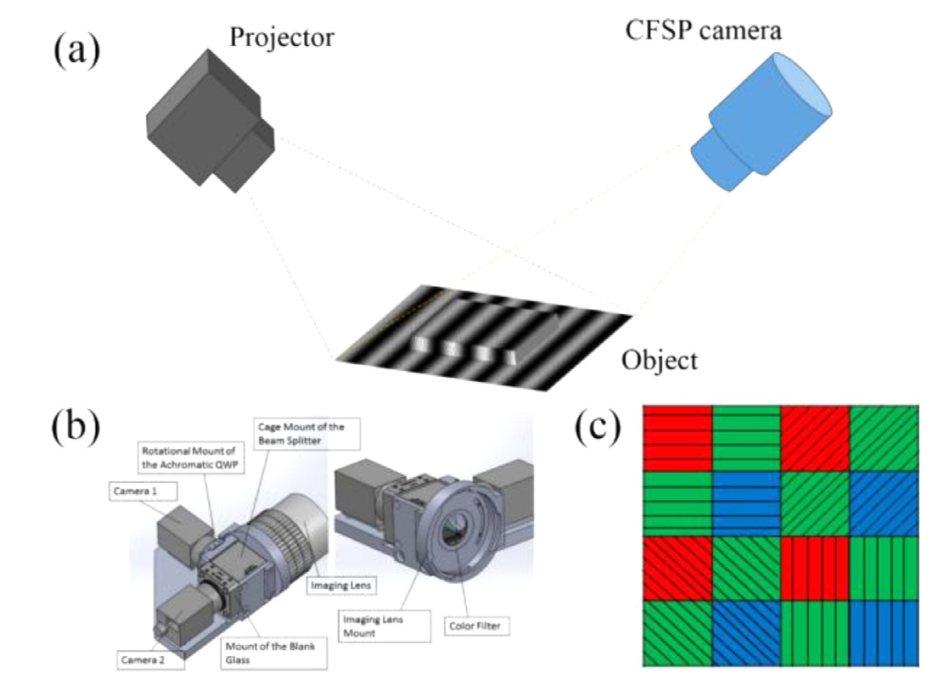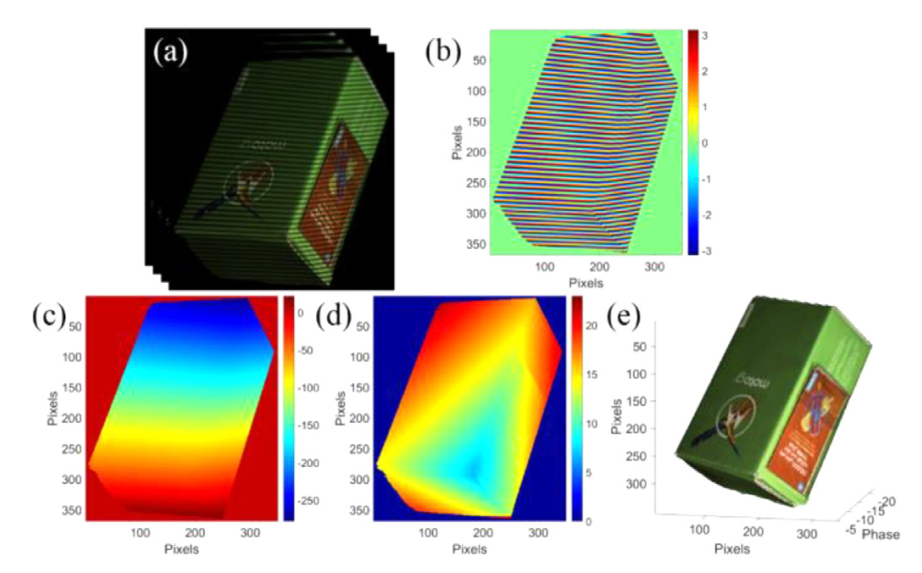Polarization is one of the four essential properties of light. The polarization properties of the light transmitted through or reflected from an object can reveal characteristics of the object. Thereby, by applying polarization information to 3D reconstruction, we can not only depict a 3D image, but we can also reconstruct targets made of different materials, such as diffused metal and transparent/translucent materials.
A research team led by Dr. LIANG Jian from Xi'an Institute of Optics and Precision Mechanics (XIOPM) of the Chinese Academy of Sciences (CAS) demonstrate a novel 3D imaging technique, which provides full-polarization information while simultaneously provides surface shape and color. Measurement of additional surface characteristics of polarization in different colors enhances both target identification and visual observation. This technique aims to use minimum image data to obtain maximum information. The output image combines both 3D information and polarization information, which greatly riches the information of one single image. The research was published on Optics and Lasers in Engineering.
 Fig.1 (a) Experimental setup of the color fringe project polarization 3D imaging system; (b) scheme of custom chromatic full Stokes polarization camera; (c) super pixel layout of the color polarization camera. (Image by XIOPM)
Fig.1 (a) Experimental setup of the color fringe project polarization 3D imaging system; (b) scheme of custom chromatic full Stokes polarization camera; (c) super pixel layout of the color polarization camera. (Image by XIOPM)
Based on the experiment scheme showed in Fig.1, a set of four phase-shifted sinusoidal fringes with the phase values of 0, Π/2,Π , 3Π/2 are sequentially projected onto the object surface, and the images of the object surface modulated by sinusoidal fringes are captured by the polarization camera. Red, green, and blue images are reconstructed by averaging four polarization images of the corresponding color channels. White light images are constructed from three color channels. In addition, a flood-fill method is introduced here to unwrap the phase. At last, a calibration process is needed to get the 3D surface of the object by imaging a flat surface and then using the measured phase of the flat surface as the reference. The reconstruction process is illustrated in Fig.2.
 Fig.2 (a) S0 channels of raw images of a paper ph one box captured by CLP camera; (b) directly calculated wrapped phase; (c) unwrapped phase by flood-fill phase unwrapping method; (d) calibrated phase; (e) Color 3D surface reconstruction. (Image by XIOPM)
Fig.2 (a) S0 channels of raw images of a paper ph one box captured by CLP camera; (b) directly calculated wrapped phase; (c) unwrapped phase by flood-fill phase unwrapping method; (d) calibrated phase; (e) Color 3D surface reconstruction. (Image by XIOPM)
Measurement of polarization in RGB color channels provides important information on the surface properties, enhancing target identification and visual observation. With color phase shifted fringes, all information (shape, color, and polarization) can be obtained in a single shot, paving the path for potential high-speed imaging applications. The proposed system and the 3D reconstruction method can be further extended to measure the complex surface and provide more essential information than the custom structured-light based 3D imaging methods.


